Saturn Sketches
The Limits of Visual Observation
In 1955, astronomer Gerard Kuiper (of Kuiper belt fame) wrote a paper
outlining the fallibility of visual observation in astronomy (On the Martian Surface
Features,
Pub. Astro. Soc. Pac., Vol. 67, No. 398, p.
271). He took aim at the supposed canals on Mars, an idea that persisted
despite a lot of astronomers failing to see them with the best available
telescopes. But he began by discussing something less provocative, reports of
detail in Saturn's rings.
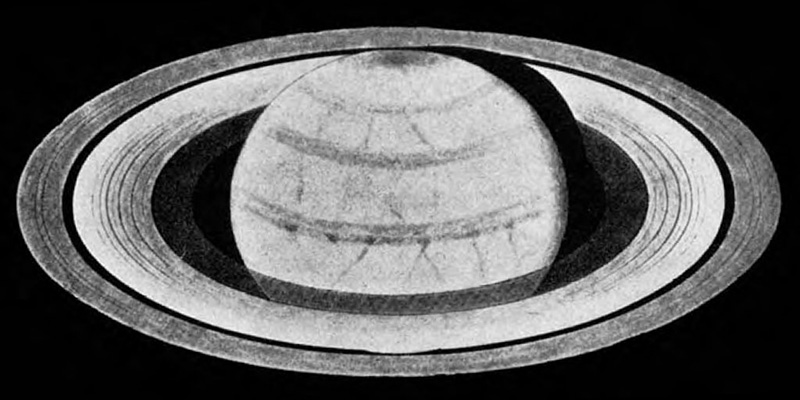 1915 sketch of Saturn by Percival Lowell and E.C. Slipher.
1915 sketch of Saturn by Percival Lowell and E.C. Slipher.
To assess the accuracy of visual observations of Saturn, Kiuper compared them to each other, finding that they weren't particularly consistent. He also reported on his own observations using two of the largest telescopes in the world at the time, the 82-inch reflector at McDonald Observatory, and Palomar's 200-inch Hale. But he couldn't compare them to photographs. Kuiper wrote at a time when astrophotography was incapable of recording the fine detail visible to the eye, which is also why visual observing was still so important.
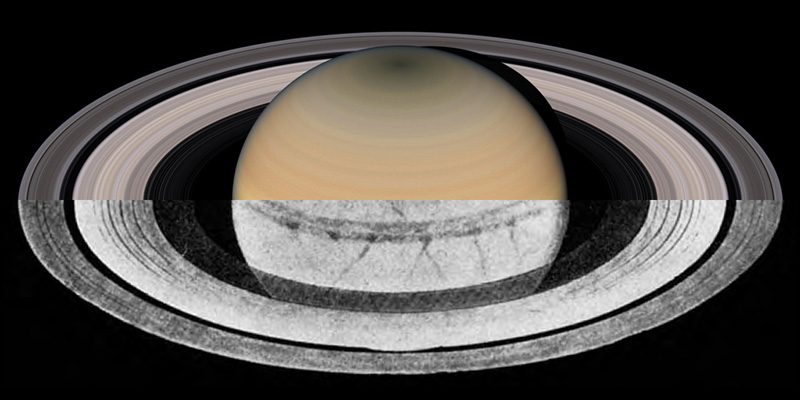 The Lowell/Slipher sketch combined with a rendering of Saturn for April 15,
1915.
The Lowell/Slipher sketch combined with a rendering of Saturn for April 15,
1915.
Here, I've used LightWave to render a couple of
images of Saturn for comparison with the observations Kuiper discussed. The
method used to render the rings is explained by
Jim Blinn in Light reflection functions for simulation of clouds and
dusty surfaces,
ACM Computer Graphics, vol 16, no 3 (July
1982), pp 21-29. The ring data is from both Voyager
and Cassini.
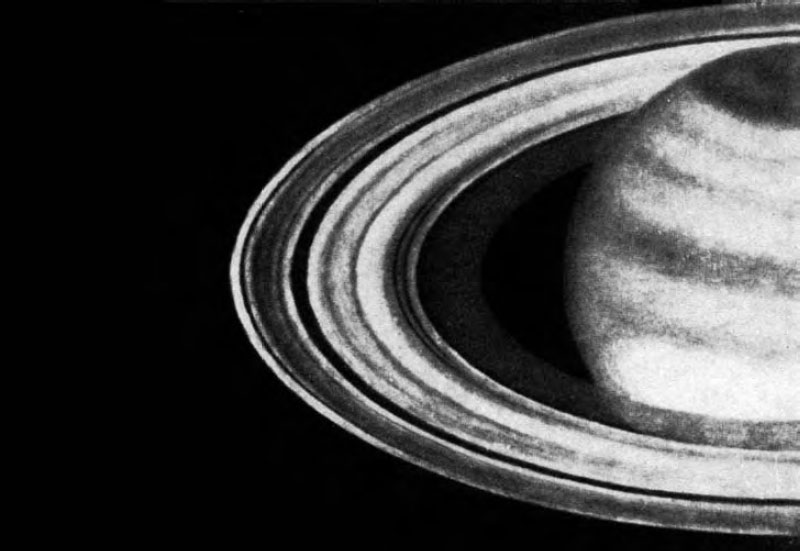 1943 sketch of Saturn by Bernard Lyot.
1943 sketch of Saturn by Bernard Lyot.
You can draw your own conclusions about the accuracy of the sketches, but I did notice something particularly odd about Lyot's: It seems to show the Cassini division in full view behind the disk of the planet. I don't think the Cassini division is ever visible in this way (well above the planetary disk on the far side of the rings). Based on my render tests and the tools here, it almost certainly wasn't at the time of maximum ring open angle in March of 1944, and that's the last maximum Lyot would have had an opportunity to observe before his death in 1952.
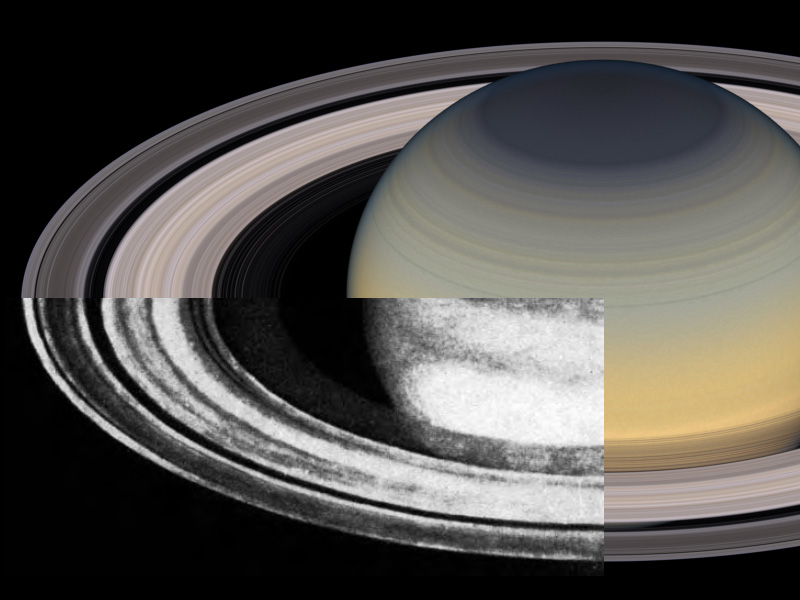 Lyot's sketch combined with a rendering of Saturn for December 15, 1943.
Lyot's sketch combined with a rendering of Saturn for December 15, 1943.
In case anyone's wondering about either the accuracy of the renders or the physical stability of the rings over a few decades, I also made a comparison with a Hubble image taken a quarter century after Voyager.
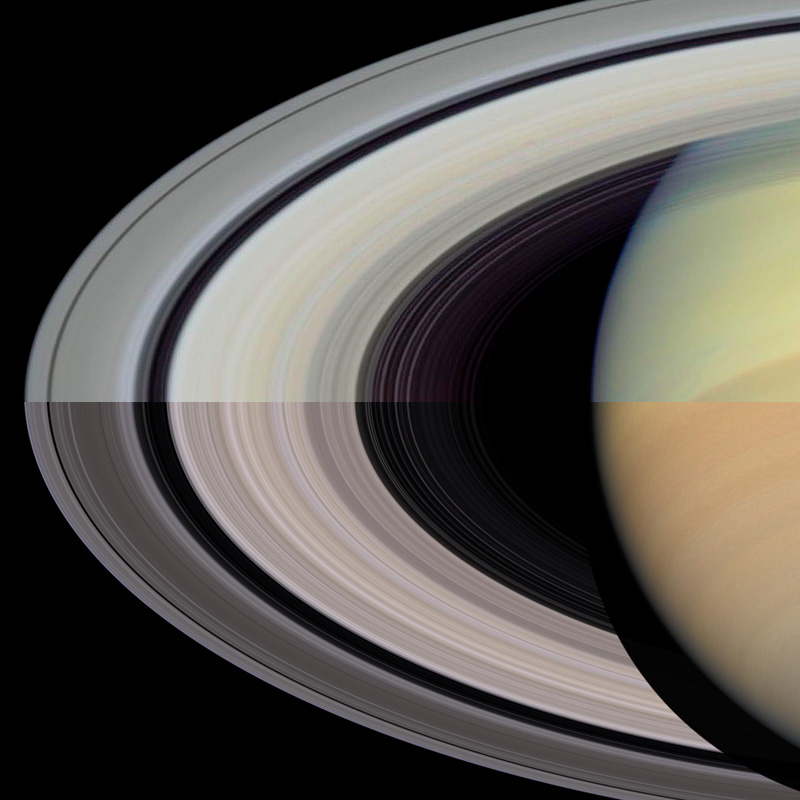 Hubble Space Telescope image
(top) and rendering for March 22, 2004
Hubble Space Telescope image
(top) and rendering for March 22, 2004
